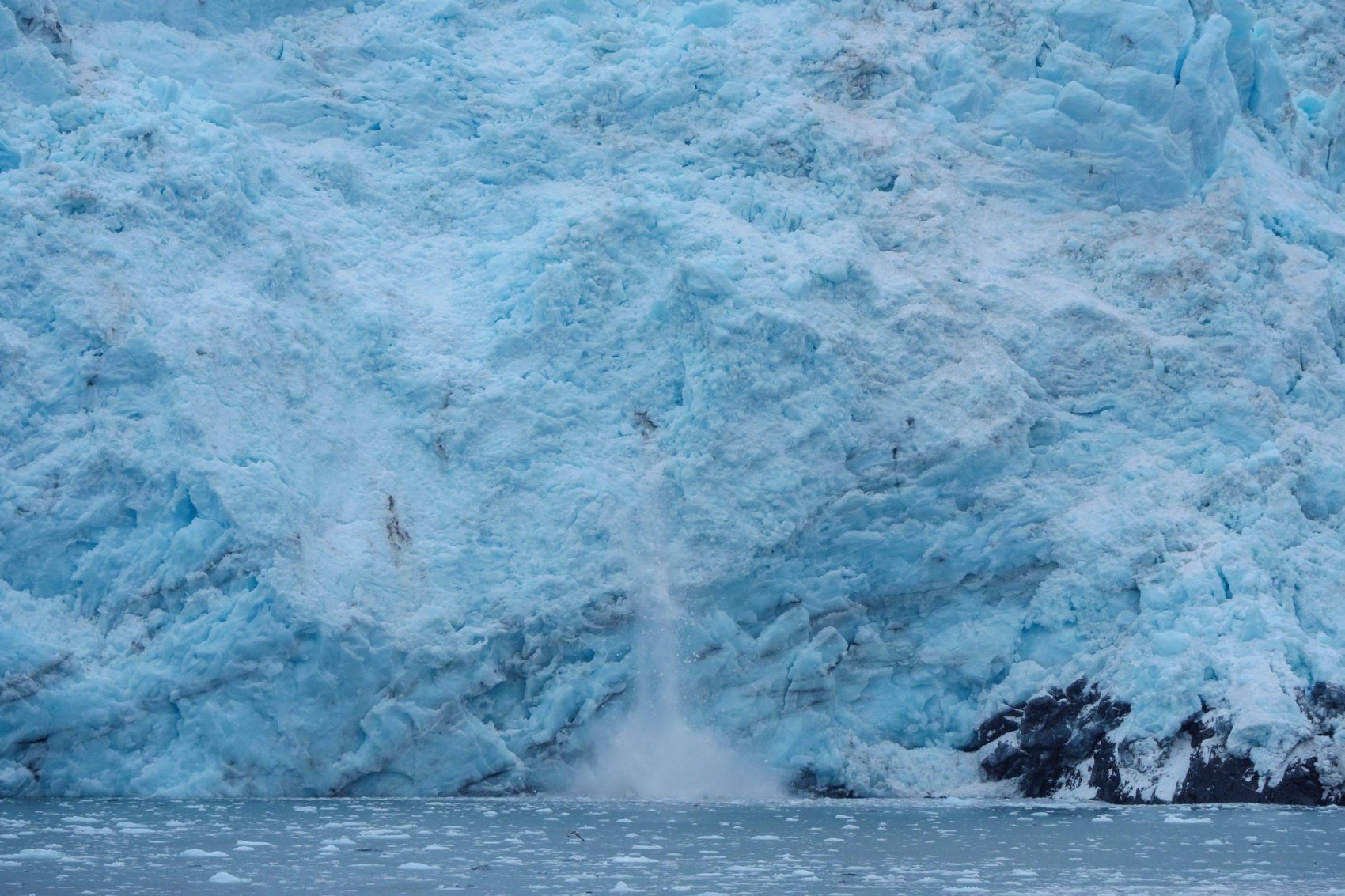
The melting of an Alaska glacier could trigger a catastrophic tsunami within the next year. Alaska’s Division of Geological and Geophysical Surveys (DGGS) has warned of the threat of a large and potentially dangerous tsunami.
The dangerous event is looming on the Prince William Sound and could release millions of tons of rock into the Harriman Fjord. Warming temperatures have left only a third of the slope supported by ice, but an earthquake, heatwave, or significant rain could cause the disastrous landslide.
This would have devastating effects on fishermen and recreationists in the area. Prince Williams Sound is located 60miles east of Anchorage and is a port area and is the location of part of the Trans-Alaska.

Scientists are comparing images of the slope taken from 2009 to 2015 and found that it has moved 600 feet over that period. They have predicted that the landslide could occur within the next year and probably within 20 years.
“It could happen anytime, but the risk just goes up way up as this glacier recedes.”
– Said, Anna Liljedahl, an Alaska-based hydrologist with the Woods Hole Research Center in Massachusetts.
Geologists know the Barry Arm area as part of the “accretionary prism,” where plate tectonics forced sedimentary rocks to marge with the southern shore of the Alaska mainland long ago in geological history. The process created numerous faults and cracks, and subsequent formation and movement of glaciers further fractured formation and movement of glaciers further fractured and eroded the landscape.
As glaciers retreat, they remove support of the valley walls, allowing the rockfalls and landslides that can create tsunamis when they enter the water.

The violent shaking of an earthquake can cause a slope to collapse, and Alaska is among the most earthquake-prone areas of the planet. Whittier, in fact, was heavily damaged by a tsunami during the ’64 Alaska earthquake, the second most powerful ever recorded.
Climate change can also be a major protagonist in this catastrophic event, as the northern part of the world is warming twice as fast as anywhere else and is causing the melting of several glaciers. Warmer temperatures, earthquakes, heavy rain, and snow are all factors that could accelerate the movement.
Alaska state officials have partnered with other agencies to install equipment that monitors landslide movement and weather conditions in the area.




